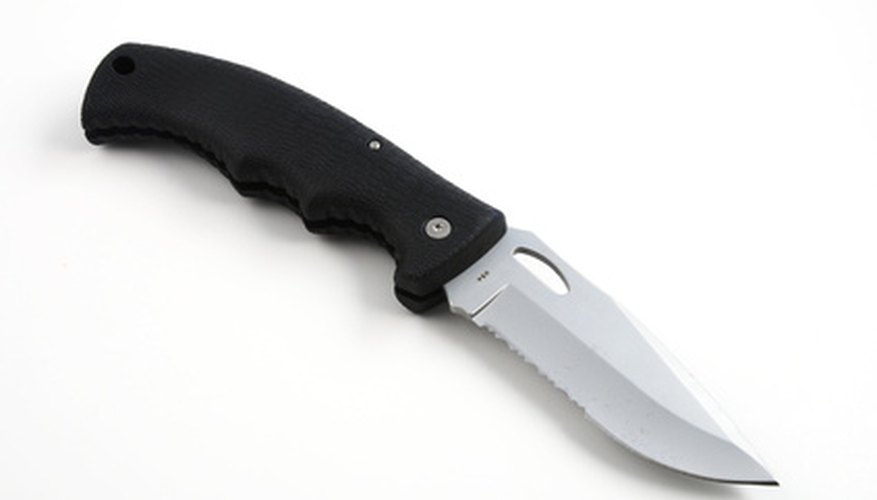Knife handles, or scales, are designed to provide a secure means of gripping a knife while cutting or chopping. Handles are made from a variety of materials including wood, ivory, bone and polymers. Many quality knives feature removable handles that allow for cleaning as well as replacement. You may want to change the handles on your knife because of damage, wear or as an upgrade. Most knife owners can change the handles with a few simple tools.
Purchase a replacement set of knife handles or scales. Contact the manufacturer that produced the knife to obtain a suitable replacement or upgrade to the knife handles. Typically, the process will involve the selection of new handles from a website or catalogue, payment and shipping of the handles.
- Knife handles, or scales, are designed to provide a secure means of gripping a knife while cutting or chopping.
- Typically, the process will involve the selection of new handles from a website or catalogue, payment and shipping of the handles.
Remove the old handles, or scales, with a screwdriver or Allen wrench. Most user-replaceable scales will feature either blade, Phillips or Allen wrench screw heads. Select a driver that closely matches the size of the screw to avoid damage.
Remove the screws and place aside for use in installing the new handles. Remove the old handles from the knife. Due to a tight fit or accumulated debris and oils, it may be slightly difficult to remove the old handles. Begin at one edge and work the handle from the knife.
- Remove the old handles, or scales, with a screwdriver or Allen wrench.
- Due to a tight fit or accumulated debris and oils, it may be slightly difficult to remove the old handles.
Wipe the knife surface under the scales with a clean cloth. Use a small amount of multipurpose oil to help remove accumulated debris and old oil. Turn the cloth to a clean area and wipe as much oil and other debris from the surface as possible.
Install the new handles onto the knife. Secure the handles in place with the screws removed from the old handles. Tighten the new handles to the knife so that they are securely held in place. Do not overtighten as this may result in damage to the screw head or the scales.
- Wipe the knife surface under the scales with a clean cloth.
- Secure the handles in place with the screws removed from the old handles.
TIP
Upgrade knife handles by selecting materials that are more conducive to gripping or provide a better handle for fine work.
WARNING
Use caution when working on your knife. Wear leather gloves to help avoid potential injury. Keep in mind that the warranty of some knives may be voided if scales attached by bolsters (non-screw-mounted) are removed.
